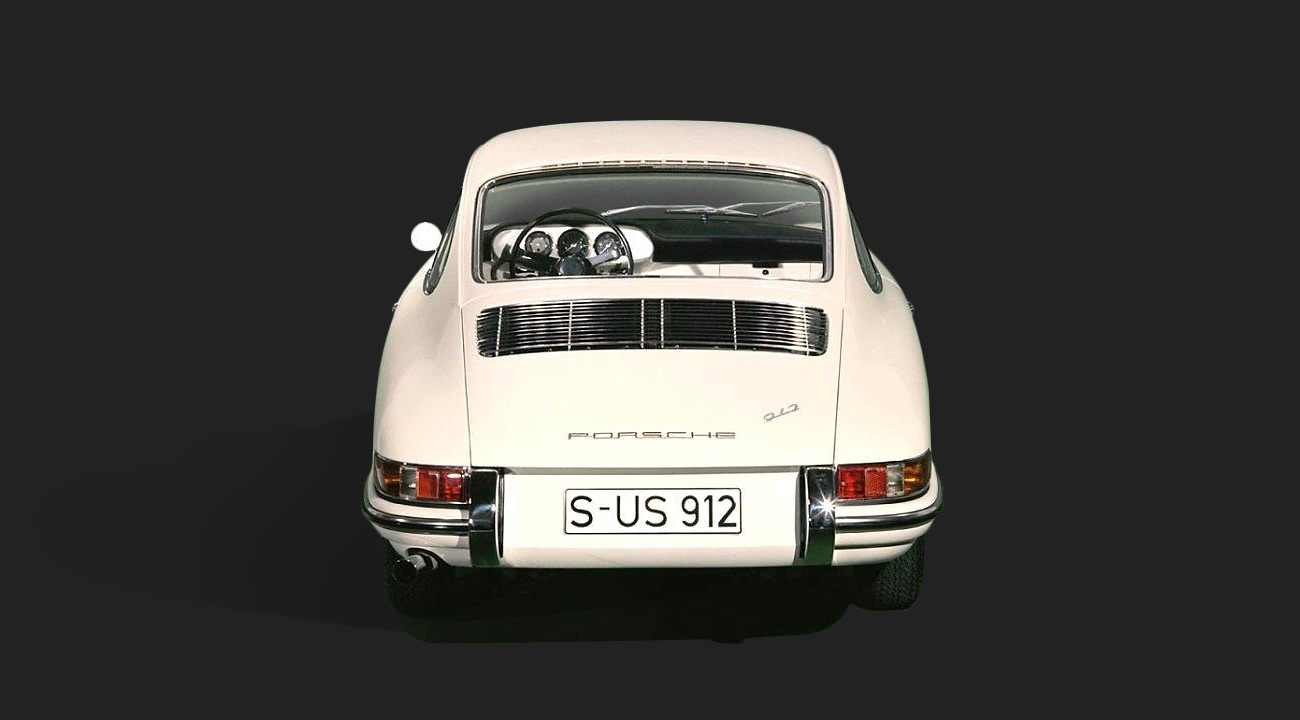The saga of the Porsche 911 viewed through the medium of model cars - Vintage of 1965
| Vintage 1965 |
| SEPTEMBER 1964 : The series production of the 901 began in September 1964. The first 901 was delivered on September 14, 1964 (chassis n° 300.007). |
 |
| Porsche 901 - Welly MAP01990113 |
| When Porsche introduced the 901 at the Paris Motor Show in October 1964, the Peugeot brand objected to the name of the model under the pretext that the model identification using three figures with a 0 in the center had already been registered by Peugeot. |
| OCTOBER 1964 : On October 22, 1964, the 901 with the chassis number 300057 is delivered. It will have a very particular destiny. |
 |
| Porsche 901 n°57 - Spark MAP02001117 |
| In 2014, a television crew contacted the person in responsible charge of vehicle management at the Porsche Museum. They had found a 901 in a barn, model number 57, out of the 82 produced. This was an unexpected opportunity to fill a gap in the models exhibited in the Museum. According to the archives, the car, with its Signal Red color and black Pepita fabric seats, dates from 1964. This matches the the wreck that was presented to the director of the Porsche archives and the head of the of the museum's workshop. The authenticity was confirmed by independent experts a few days later. Fifty years later, the Porsche 901 n°57 returned to Porsche for a complete restoration in accordance with the requiremen of the brand. It was accompanied by a second model that Porsche retained as is, and a batch of spare parts that would be used for the restoration. The restoration took 3 years and the final result was perfect. Like all the other vehicles in the museum, the Porsche 911 number 57 is roadworthy once more. |
| NOVEMBER 1964 : On November 10, 1964, in response to Peugeot's objection, Porsche 901 was renamed 911. Prior to the change of the model's name, 82 901 models were built. The 911 differs externally from the 901 by a diagonal 911 logo on the rear hood and internally by a 911 sign on the glove box. |
 |
| Porsche 911 - Minichamps MAP02001113 |
| The 911, produced only as a coupe, had a self-supporting body and was powered by a new 2.0-liter (1991cc) flat-six engine generating 130 hp. The 911s were fitted with Solex 40PI carburetors, dry sump lubrication, one overhead camshaft per 3- cylinder row and a 5 speed gearbox (type 901), all synchronized (1st gear down left behind the reverse gear, this type of gearbox was used until the end of the 1971 vintage). The rack and pinion steering was precise and direct. Moreover, it formed part of the safety concept, as it was designed in three parts, the steering mechanism was positioned in the center of the vehicle, so that the steering wheel would not shift towards the driver in the event of a frontal impact. The system featured 3 tube sections that disengage in the event of a in a head-on accident. |
| FEBRUARY 1965 : First exportation to the United States. |
| APRIL 1965 : Introduction of the 912 to the range. It was equipped with a 4 cylinder flat engine of 1.6 L delivering 90 hp and a 4 speed manual gearbox (the 5 speed manual gearbox was optional). Externally, the 912 was identical to the 911, the only exception being the Porsche logo and the 912 insignia, which were silver instead of gold. Inside the dashboard was equipped with only 3 dials. |
 |
|
|




































































































































































































































































